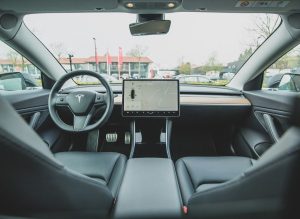The global push toward sustainability has put electric vehicles (EVs) at the forefront of modern transportation. While EV adoption is rising worldwide, the pace and scale vary greatly by region, influenced by local policies, infrastructure investments, economic conditions, and consumer demand. Exploring these regional differences sheds light on the progress, challenges, and opportunities shaping the global EV landscape.
Europe: A Global Pioneer
Europe continues to set the standard for EV adoption, driven by ambitious environmental goals and government support. Northern European countries, such as Norway, the Netherlands, and Sweden, lead the charge. Norway, for instance, achieved a milestone where EVs accounted for over 80% of new vehicle sales in 2022, a reflection of long-standing incentives and a robust charging network.
The European Union’s commitment to phasing out internal combustion engine (ICE) vehicles by 2035 underpins this growth. Tax breaks, purchase subsidies, and an extensive EV infrastructure network have been key enablers, alongside a growing lineup of electric models from European automakers like Volkswagen, Renault, and Volvo.
However, disparities exist within the region. Southern and Eastern Europe face slower EV adoption due to less developed infrastructure and fewer financial incentives. Closing these gaps remains a challenge as the EU works to make EVs more accessible across all member states.
China: The Largest EV Market
China’s dominance in the EV market is unmatched, accounting for nearly half of global EV sales. Aggressive government policies, substantial subsidies, and massive investments in charging infrastructure have propelled China into a leadership position. Cities like Shenzhen have fully electrified public transportation fleets, setting a global benchmark for urban electrification.
Domestic automakers such as BYD, NIO, and XPeng have played a significant role, producing affordable and innovative EV models for a wide range of consumers. The government’s dual focus on urban sustainability and technological advancement has created a thriving market for EVs, particularly in densely populated areas.
Despite its success, challenges persist in rural regions, where infrastructure and affordability are less developed. Still, China’s commitment to expanding access ensures that the gap between urban and rural areas will likely narrow in the coming years.
United States: Uneven but Promising Growth
The United States has seen steady growth in EV adoption, though progress remains uneven across states. California is a standout leader, with EVs making up over 16% of new vehicle sales in 2022. The state’s strong regulatory framework, incentives, and extensive charging network have made it a model for others to follow.
At the federal level, the Inflation Reduction Act has introduced tax credits and infrastructure funding to accelerate adoption nationwide. However, gaps in charging infrastructure and the varying levels of state support have created regional disparities.
Automakers like Tesla, Ford, and General Motors have been instrumental in driving adoption, offering a range of EVs to suit different market segments. The introduction of electric trucks like the Ford F-150 Lightning has broadened EV appeal in regions traditionally dominated by large vehicles.
India: Building Momentum
India’s EV market is still in its infancy, with EVs accounting for just over 1% of new vehicle sales. The government’s FAME (Faster Adoption and Manufacturing of Hybrid and EVs) initiative is helping to create a foundation for growth by offering subsidies and incentives for both buyers and manufacturers.
The EV landscape in India is dominated by two- and three-wheelers, which are affordable and practical for the country’s densely populated cities. However, the passenger car segment faces challenges such as high costs, limited charging infrastructure, and a lack of diverse EV models.
As domestic manufacturers like Tata Motors and startups like Ola Electric continue to expand their offerings, and infrastructure improves, India’s EV adoption is expected to accelerate in the coming years.
Other Regions: Emerging Markets
In Africa, South America, and Southeast Asia, EV adoption remains slow due to economic constraints and limited infrastructure. However, progress is being made. Countries like Brazil and South Africa are beginning to embrace electrification with government-backed incentives and partnerships with international manufacturers.
Southeast Asia shows promise, particularly in Thailand and Indonesia, where governments are attracting investment for battery production and EV manufacturing. These efforts could position the region as a significant player in the global EV supply chain.
What Lies Ahead
Global EV adoption rates paint a picture of both progress and disparity. Europe and China lead the way, showcasing what can be achieved through robust policy support and investment. Meanwhile, countries like the United States and India are steadily improving, while emerging markets in Southeast Asia, Africa, and South America are beginning to establish their presence.
As the global EV ecosystem evolves, the focus will shift to addressing barriers such as infrastructure development, affordability, and regional inequalities. By fostering collaboration between automakers, governments, and private sectors, the world can accelerate the transition to electric mobility and achieve a more sustainable future.













